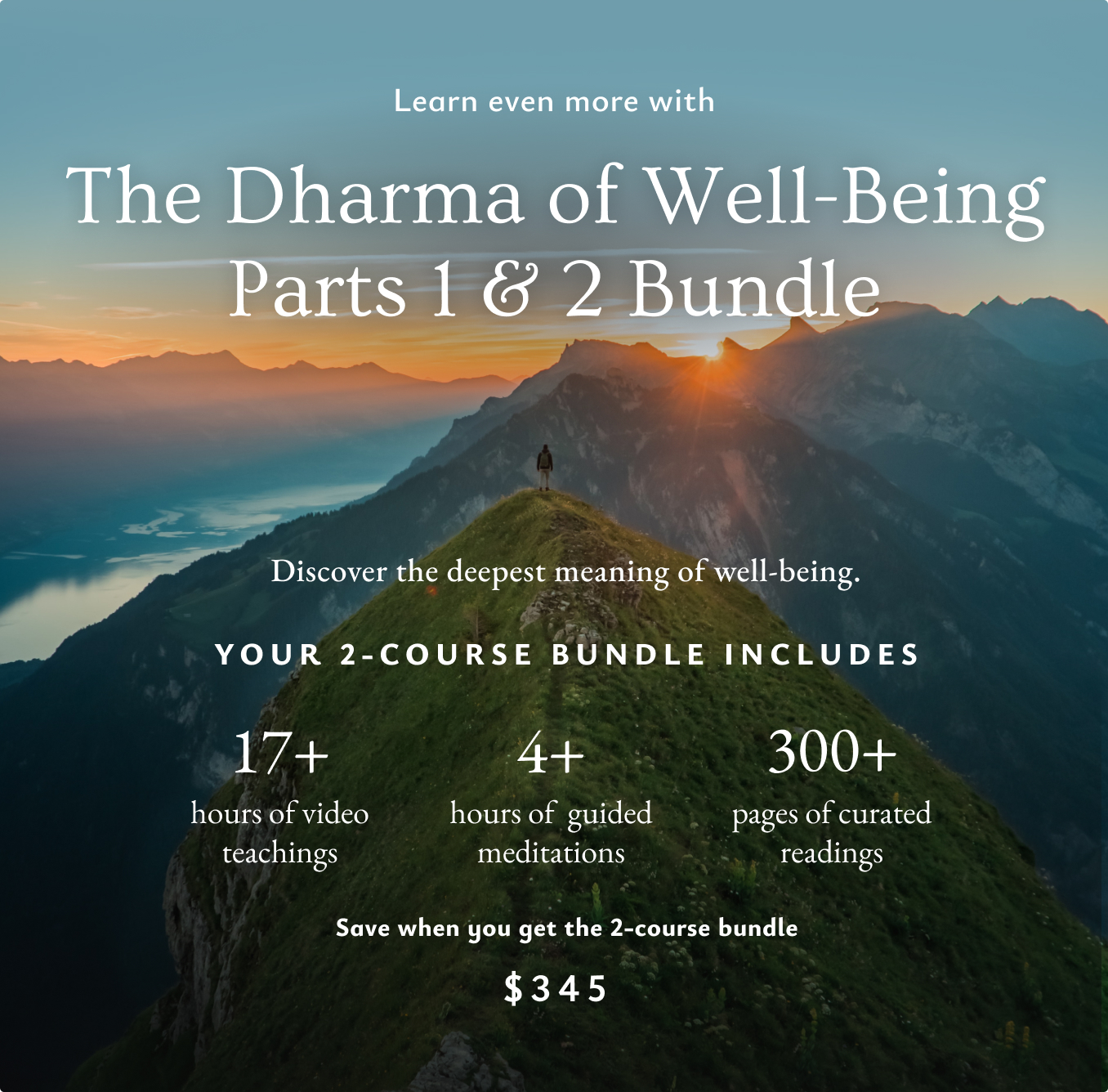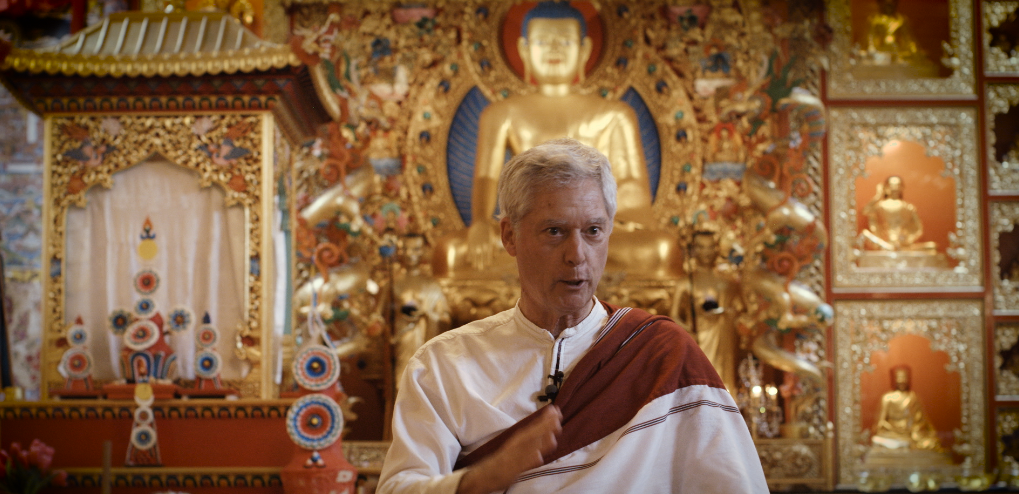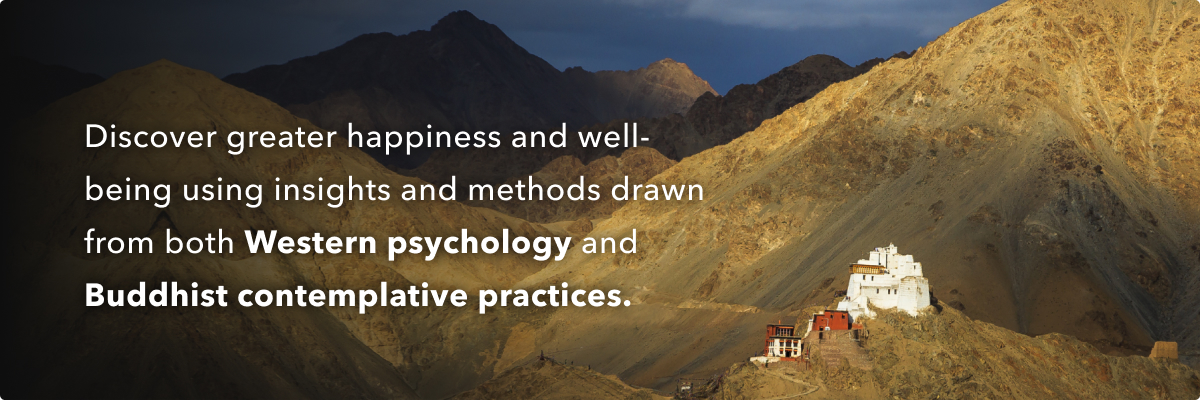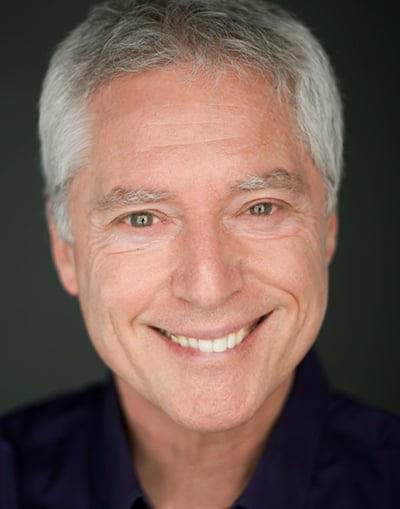
The Wisdom Academy presents
The Dharma of Well-Being
Parts 1 & 2 of a 3-Part Online Course Series with Lama Alan Wallace
Discover greater happiness and well-being using insights and methods drawn from both Western psychology and Buddhist contemplative practices in this three-part course with Tibetan Buddhist teacher Lama Alan Wallace.
(Click here for information about part 3.)

Click the button below to enroll today!
In A Scientific Investigation of the Mind, Lama Alan Wallace explains how the teachings of the first turning of the wheel of Dharma emphasize a scientific approach, with seekers being encouraged to look directly inward to examine the real causes of happiness and suffering.
You’ll learn about:
• The inner causes of suffering
• The nature and characteristics of afflictions (kleśas)
• Developing attention, concentration, and insight
• Applying śamatha and vipaśyanā to realize selflessness
• Understanding the truth of cessation and the path to liberation
• Practices to help you develop genuine well-being
• And more!
Click the button below to enroll in parts 1 and 2 today!

Watch the Part One Trailer

Part One: Lesson Plan
Lesson 1: Introduction & Genuine Well-Being
Lesson 2: The Causes of Suffering
Lesson 3: The Contagious Nature of Mental Afflictions
Lesson 4: Developing Attention
Lesson 5: The Inner Causes of Mental Distress
Lesson 6: The Nature of the Mind
Lesson 7: The Inner Causes of Well-Being
Lesson 8: Developing Genuine Well-Being
In Pristine Awareness Realizing Reality, Lama Alan explores the profound reasonings presented in the second turning of the wheel of Dharma that can help us differentiate reality from mistaken appearance and infer the emptiness of all phenomena.
You’ll learn about:
• Inferring how self and phenomena exist
• How ignorance gives rise to the other afflictions
• Identifying the object of negation
• The nuanced views of Prāsaṅgika Mādhyamaka philosophy and mahāmudrā
• The distinction between appearance and reality
• How to transform your approach to self, friends, enemies, and the world
• And more!
Click the button below to enroll in parts 1 and 2 today!

The course explores the deepest root of suffering: grasping to inherent existence. The Middle Way teachings of the Buddha’s second turning of the wheel of Dharma look at the nature of identification and the way phenomena exist.
Understanding how the self is perceived, we can reveal the process by which we form attitudes and behaviors in our relations to other sentient beings. With this deflating of self-centered delusion, we are brought into accord with reality and able to inspire well-being for all, including ourselves.

Lama Alan Wallace, internationally renowned for the clarity and profundity of his teachings, invites you to explore the inner causes of suffering alongside the causes of genuine well-being, and learn practices and techniques that will help you on your journey to develop genuine and lasting well-being.
Click the button below to enroll in parts 1 and 2 today!
While it’s not required, we recommend completing The Dharma of Well-Being, Part One before engaging with parts 2 and 3.

Lesson 1: Searching for the Self
Lama Alan introduces the deepest root of suffering: grasping to inherent existence. Through searching for the nature of the self and phenomena, the fixation on the “I” can be undermined and eventually eradicated completely, leading to a balanced and healthy approach to the experiences of suffering and pleasure.

Lesson 2: Unraveling Afflictions
Lama Alan presents the core theme of the Perfection of Wisdom Sūtras: as long as reification persists, mental afflictions will continue to arise. By observing the arising of mental afflictions and not identifying with them, it can be realized that they do not exist in the way they appear.

Lesson 3: The Emptiness of Permanence
Lama Alan reveals the pinnacle of Buddhist philosophical thought, Mādhyamaka Prāsaṅgika, and how this approach to the ultimate nature of reality brings well-being and freedom from sufferin

Lesson 4: Appearances and Entities
Using the “four schools of Buddhist philosophy” model as a framework, Lama Alan highlights the ontological and epistemological implications of each progressively-deeper view into the nature of reality, which leads to the eradication of suffering and its causes.

Lesson 5: Equalizing Self and Others
Repaying the kindness that infinite sentient beings have shown us is the essence of the bodhisattva path. Lama Alan looks at ways the self is perceived and how this shapes attitudes and behaviors in relation to other beings.

Lesson 6: Ethics, Samādhi, Wisdom
In this lesson, Lama Alan introduces the actual method of the Mahāyāna student, looking at the transformation from renunciation to bodhicitta. Turning within for satisfaction and cultivating selflessness is the authentic bodhisattva path.

Lesson 7: Universal Well-Being
The path of the bodhisattva requires setting out; one must take steps toward the goal in order to arrive. Cultivating the mind through meditation provides a vehicle for the expedition to the great well-being of all beings.

Lesson 8: Entering the Mahāyāna Path
Lama Alan completes this second module, detailing how cultivation of the Six Perfections provides holistic well-being and relieves the suffering of others as well as ourselves. Sharp śamatha empowers broad bodhicitta, which is protected by deep wisdom.
 Lama Alan Wallace is the founder and director of the Santa Barbara Institute for Consciousness Studies and the Center for Contemplative Research. He trained for many years as a monk in Buddhist monasteries in India and Switzerland. He has taught Buddhist theory and practice in Europe and America since 1976 and has served as interpreter for numerous Tibetan scholars and contemplatives, including H. H. the Dalai Lama. After graduating summa cum laude from Amherst College, where he studied physics and the philosophy of science, he earned his MA and PhD in religious studies at Stanford University. He has edited, translated, authored, and contributed to more than forty books on Tibetan Buddhism, medicine, language, and culture, and the interface between science and religion.
Lama Alan Wallace is the founder and director of the Santa Barbara Institute for Consciousness Studies and the Center for Contemplative Research. He trained for many years as a monk in Buddhist monasteries in India and Switzerland. He has taught Buddhist theory and practice in Europe and America since 1976 and has served as interpreter for numerous Tibetan scholars and contemplatives, including H. H. the Dalai Lama. After graduating summa cum laude from Amherst College, where he studied physics and the philosophy of science, he earned his MA and PhD in religious studies at Stanford University. He has edited, translated, authored, and contributed to more than forty books on Tibetan Buddhism, medicine, language, and culture, and the interface between science and religion.





